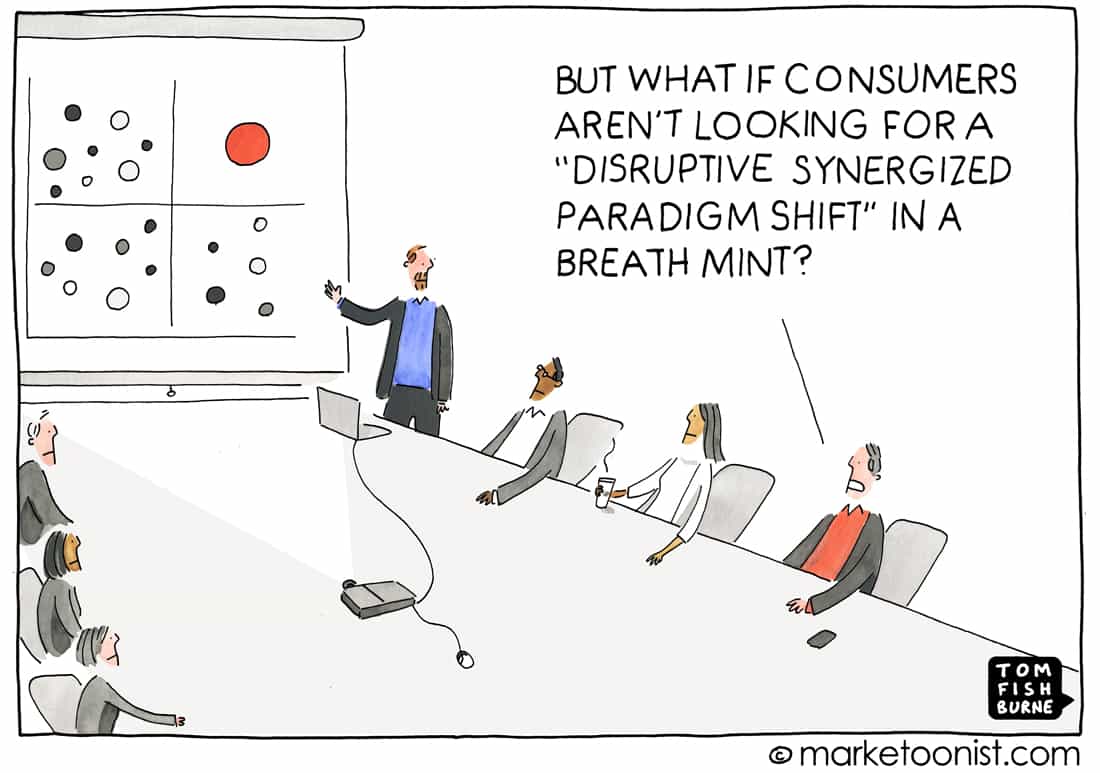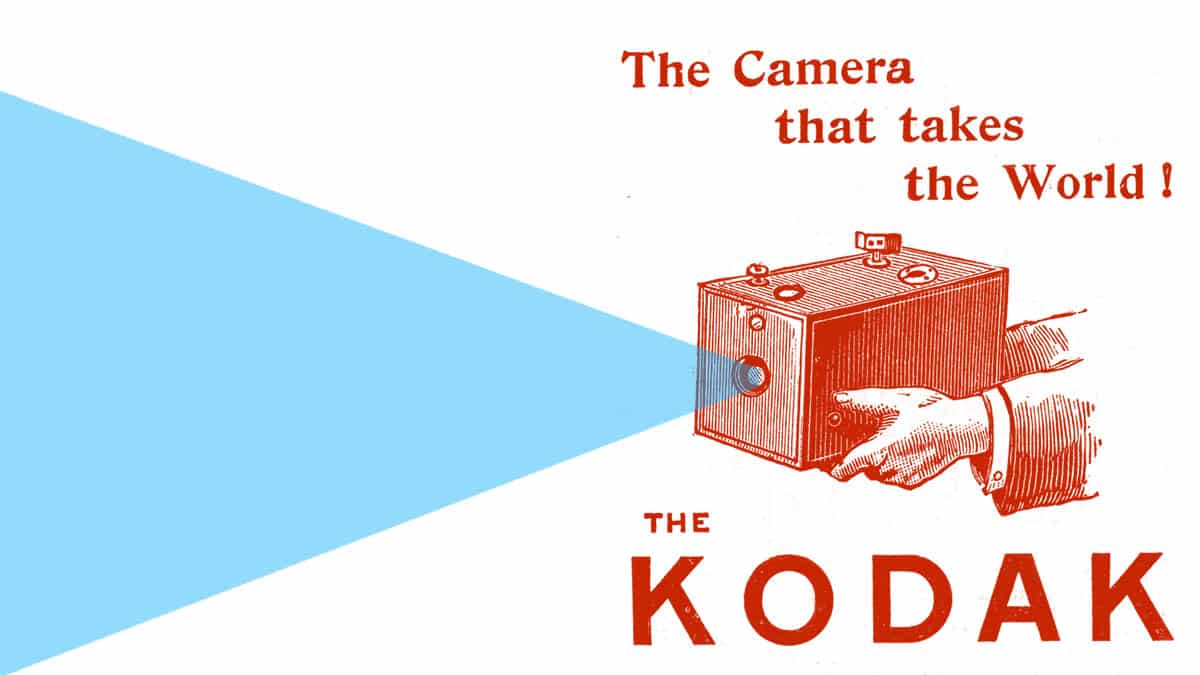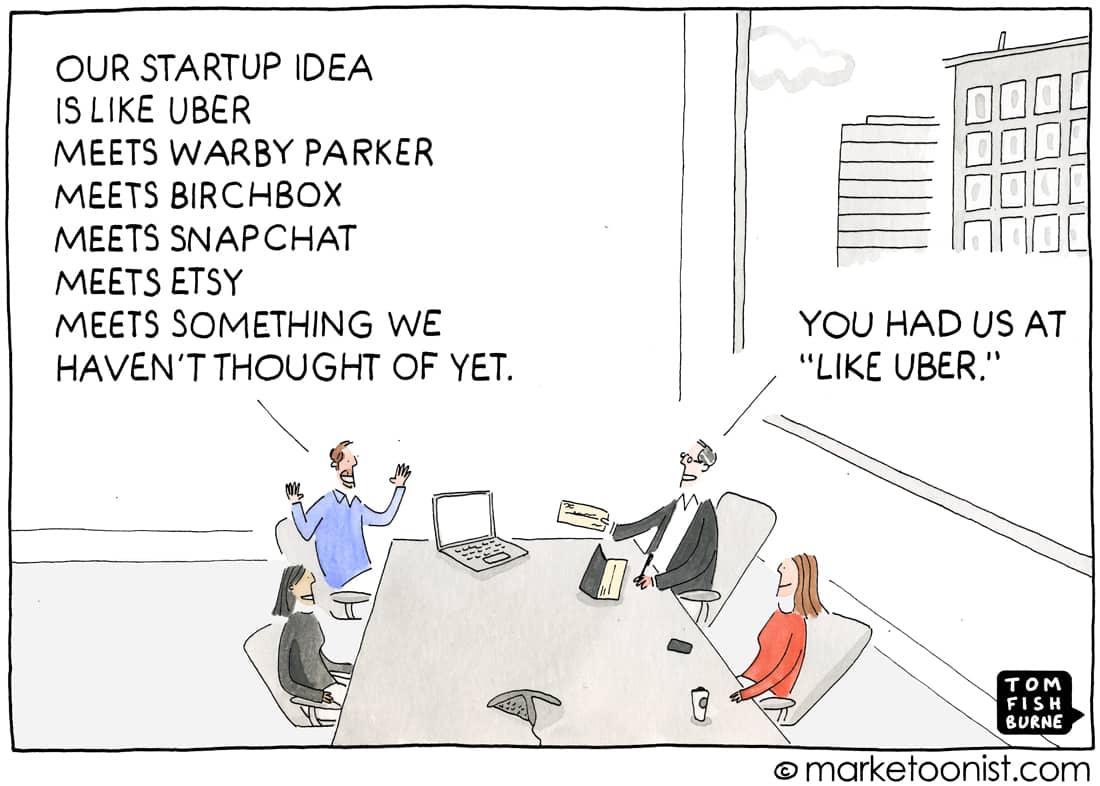The business case for stimulating employee-driven innovation in a business of any size or maturity is overwhelming. Innovation;
- Creates new value and customer experience
- Improves productivity and reduces costs
- Builds the value of your brand
- Engages and excited your employees
- Drives sustainable growth
However, innovation is hard. It has always been hard, but in this highly digital world we now live in the barriers to entry for start-ups have lowered considerably. The chances that you, or at least some of your products, will be disrupted by agile, innovative start-ups is greater than ever.
The problem that corporates face can be brilliantly summed up in what’s known as the Innovation Paradox, a term coined by Salaman and Storey which in a sentence is this;
“Survival today requires coherence, co-ordination and stability.Survival tomorrow requires the replacement of those erstwhile virtues”
To put it another way, the way we organize our companies is often at odds with the kind of behaviors and culture in which innovation thrives – the front-end of the innovation process of course NEEDS variance, risk and the acceptance that there is likely to be more failure than success. Those things REALLY go against the grain in large organizations!
How does one build a culture of innovation? Adopt these key perspectives.
Perspective 1: Innovation is Strategic and compelling
You need to set the vision that people can understand and contribute to as well as some high-level objectives and goals. Guard against the common mistake of making it too generic i.e. “we will become the innovation leader in our sector”. No-one will believe it, and it is virtually impossible to measure. Focus should be on the outcomes you are looking for – the compelling drivers for innovation, but ones that provoke ideas.

Perspective 2: Be prepared to disrupt yourself
This is significantly easier to say than it is to do. However, it is the only way to fight off disruption. We don’t enjoy looking for, let alone acknowledging threats, but it’s essential that we are honest with ourselves and be determined to find ways to disrupt before we are disrupted.
A good place to start is to look for products or service lines that are losing volume and or margin – the more commoditized a product is, the more likely it is to be disrupted and use this as a focus for some innovation. Ask, “how can we create new value”, or “can we change the utility or customer experience” or “if we were designing this from scratch now, what would it look like, what would it do, who would we market it to”.
Perspective 3: Stay open to new ideas from all corners of the organisation
Ideas can come from anywhere so always be open to listening to and watching both how your employees work and how your customers use your products. In Design Thinking terms, this is what’s called the empathy stage. Often the most off-the-wall ideas can trigger the most innovative products.
Perspective 4: Build a Network of Intrapreneurs
For those of you for whom this is a new word, an intrapreneur is an entrepreneur – yet inside your organisation. Not everyone can be an intrapreneur just like not everyone can be an entrepreneur so make it optional – invite people to apply and give them some kudos for being selected but above all, train them in the tools and techniques taught in the top business schools around the World – Lean Startup and Design thinking. One of the best ways of identifying your potential intrapreneurs is to consider who are the employees that are the most likely to leave to become entrepreneurs.
The pay-back for innovation is potentially enormous, but it’s a balance between reward and risk. Your intrapreneurs at the forefront are taking the biggest risk so they need to know that they have the support of senior people in the organisation – ideally the CEO. Their role is keep reminding people of the strategic importance of innovation, celebrating success and encouraging the next wave of intrapreneurs to sign-up and participate.

Perspective 5: Trust your Intrapreneurs and give them time to innovate
In organizations where staff rely on the boss for every major decision, innovation won’t happen. It’s essential that you allow your intrapreneurs to work autonomously. Not only will micromanaging them slow things down, the pressure they may feel NOT to fail will stifle their creativity. They need to be able to make mistakes without being criticized.
An approach many organizations take is to give their innovators a percentage of time to work on their innovation projects. Google was famous for its 20% initiative as is Microsoft for its Garage. It’s best practice to ask them to report in and share their experiences – the success as well as the failure because often we can learn a lot from what didn’t work.
Perspective 6: Embrace Experimentation
At the heart of Lean Startup is a scientific process;
- Build a hypothesis to test an idea
- Identify all the assumptions that need to be true for the hypothesis to be true
- These assumptions are then prioritized based on risk and certainty
- We then run rapid experiments to test the most uncertain and risky assumptions
- Some experiments will tell us to persevere, others will force us to pivot
"An opinion is a poor substitute for evidence"
Tony Robbins
An inevitable feature of experimentation is failure. Up to 80% of your experiments are likely to either be inconclusive, or fail. This is also perhaps one of the hardest cultural barriers to overcome for corporates. We are programed, from an early age, NOT to (or at least been seen to) fail. It is the number one reason why most of your people do not offer you their ideas so it is essential that we reframe and de-risk it by reminding people that every failure is one step closer to success.

Perspective 7: Work with the doors open
The link between innovation and the working environment can’t be under estimated. If you want your intrapreneurs to create something radically different to the business as usual, don’t expect them to achieve that where you normally do business.
Many organizations create an innovation space or zone where ideas, designs and prototypes can be freely displayed both to inspire and inform other people to take part. Diversity is key; diversity in teams, in approach and location.
Perspective 8: Instill a start-up mindset
Start-ups that do not focus on growth do not stay in business very long, so while you absolutely need to instill a culture of experimentation you also need to focus on measurable outcomes. In all probability those measures will be different to your normal KPIs. It is essential that you measure the process; yet focus on the small number of measures that really matter. In its early days, Facebook measured just one thing, how often its users returned to its site. Everything they did was focused on this one measure.

Perspective 9: Be prepared to fund the most promising ideas
Let’s remind ourselves of the first point: Innovation is Strategic. Innovation activity that isn’t aligned to the strategy and priorities of the organization won’t get funded, but where it is, and the business case and ROI has been rigorously tested, fund it!
If you are launching an innovation strategy, best practice is to publicly assign a budget for innovation. Set a high bar to how and when that budget will be accessed, but don’t leave any doubt in the minds of your wider organisation that you are serious.
Perspective 10: Live it
Innovation can feel like you are climbing a mountain. We prefer to think of it as more like a journey through a mountain range. There will be plenty of ups and downs and it’s sometimes easy to lose sight of the summit. We are here as your mountain guides.
Matthijs Rosman
Trusted and creative advisor. Specialist in growth acceleration and innovation. Combines analysis and creativity to develop surprising combinations. From new digital possibilities to ways to improve commercial results. Cordial towards others, sharp on details. Continuously looking for growth opportunities.
Related posts
Measuring Innovation: A guide to building investment confidence
Discover how innovation accounting ensures your business…
January 21, 2025
Introducing ISO 56001: The new standard in innovation management
ISO 56001 provides organizations with a structured…
January 14, 2025
Manual vs AI-powered subsidies search: A novel approach to public funding
Ever felt like finding the right subsidy feels like…
November 20, 2024



